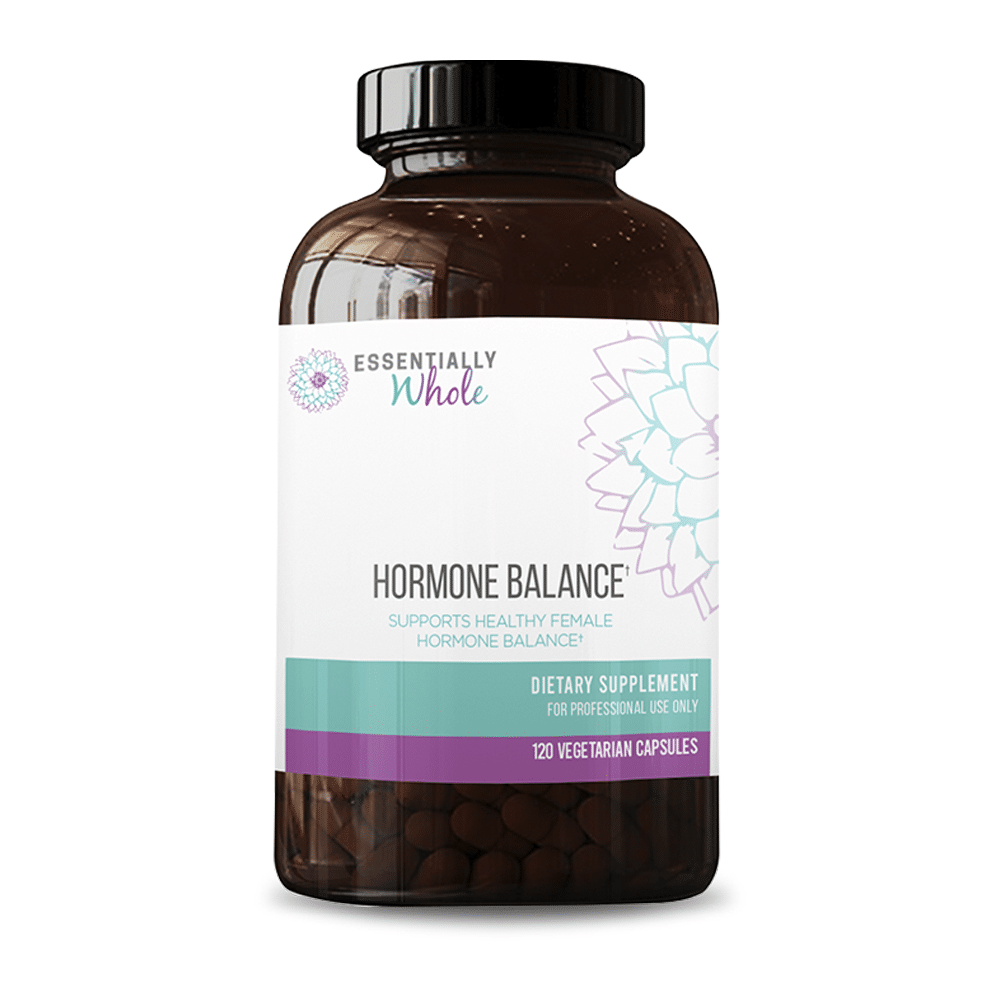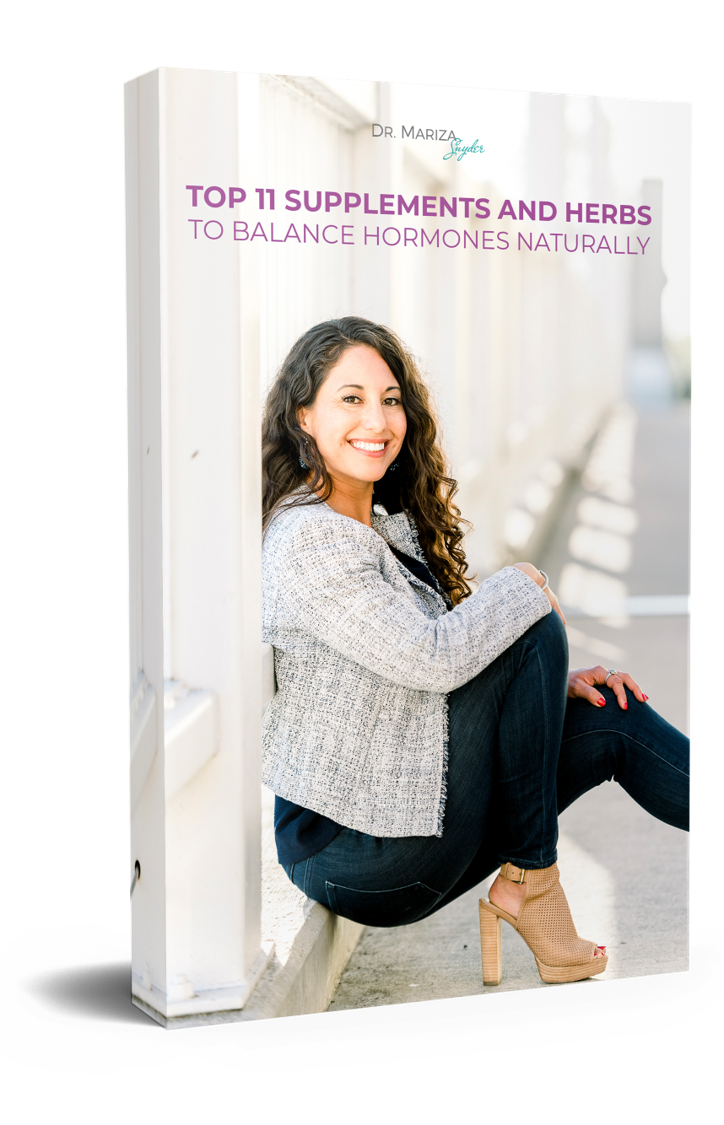
It’s time for us to start talking about our periods.
Your period should not be a source of shame or embarrassment.
Growing up, I was never encouraged to talk about my period. When I got it for the first time, my mom handed me some pads and that’s about the extent of it.
What if we rewrote the narrative…what if we started celebrating our periods? What if we started allowing our bodies to follow the ebb and flow of our cycles instead of fighting against it?
It could be a beautiful new world for the next generation if we all stand tall and proud as women and don’t shy away from our periods.
But the only way that is going to happen is if we truly understand what is going on during our menstrual cycles and take steps to truly listen to our bodies.
Want to own each phase of your menstrual cycle with the help of powerful essential oils? Check out this post to learn how.
Your Period Is Your 5th Vital Sign
You should approach your period like you approach your body temperature, pulse, blood pressure and respiratory rate — as a vital sign of what’s going on inside your body.
If you have a fever, you’re fighting off infection. If you have high or low blood pressure, pulse, or respiratory rate, you’re dealing with some significant issues that need to be addressed.
And just like any of those signs, when something is off with your period, it is always a sign that something is wrong with your hormones.
Let me say that again: it’s not just a “woman problem.” If something is not right during your menstrual cycle, there is a real root cause behind it that needs to be addressed!
How It Should Look
I’m amazed by the number of women who reach out to me saying they don’t even know what a “normal” period should look like. That’s how far we’ve gone as a society: we’ve normalized agonizing pain and intermittent periods while stigmatizing our cycles so much that we aren’t even educating ourselves or our girls on what to look out for!
Every woman is different, so every cycle is going to look different. Learn to listen to your body; if something changes suddenly or feels off, it probably is. But here are the basics…
- A typical period should last 3-7 days with moderate flow throughout.
- The discharge should be varying shades of red with few small clots.
- You shouldn’t have debilitating cramping.
- Your period should occur every 24-36 days.
While your “normal” may fall outside of these parameters, that doesn’t mean that’s the way it’s supposed to be. My hope is to empower you with the knowledge to understand what your body’s signals could be pointing to so you can own your health!
A special note for those of you in perimenopause…
During this limbo, it’s normal to experience changes. But if you have increased pain, extra-heavy bleeding, or other concerns, your body may be telling you that her needs are changing. Listen. Then act. That’s the best thing you can do. Keep reading to hear my best recommendations for you to help you feel your best again.
When It’s Not as It Should Be…
When something is off with your period, there is a root cause behind it that needs to be addressed if you want to find true relief.
Here are a few signals your period could be sending you and their potential root causes. I’ll cover what’s normal, what’s not, and what you should do about it. If you identify yourself in any of the irregularities, advocate for yourself and discuss it with your trusted practitioner.
Buckle up, because I’m about to throw a lot of valuable information at you!
Period Color
The color of your discharge should vary throughout your period, but too much of anyone type could indicate a problem. Here are a few possibilities of ways your period’s color could be indicating your health:
- Bright or dark red blood is normal during the majority of your period. However, if it’s particularly heavy, it could indicate uterine polyps or fibroids.
- Brown or black discharge is typically just older blood that takes longer to leave your uterus. If you have clots, they are normal as long as they are smaller than a quarter. If you have larger clots, they could be caused by polyps, fibroids, endometriosis, or hormone imbalances.
- Light pink flow is normal at the beginning or end of your period when your discharge is diluted with other cervical fluids. However, if it stays light pink throughout your period, it could indicate low estrogen levels. This is more common as you enter perimenopause.
- Other variations (especially orange or gray) are NOT normal. They typically indicate infections, so you should see a doctor right away if you experience them.
Period Volume
The volume of your period is another highly individual thing. Be especially on the lookout for sudden changes (again, fluctuations here are normal during perimenopause, but that doesn’t mean you should let yourself suffer).
- Too little bleeding (meaning 3 days or less, or a sudden decrease from your normal) could mean your body doesn’t have enough blood to spare. This can be caused by hormone imbalances, nutrient deficiencies (especially iron), PCOS, or stress.
- Too much bleeding (meaning more than 7 days, having large clots, or needing to change your pad or tampon every 2 hours or less) could be a sign of uterine polyps or fibroids. You will want to watch this closely, as the extra bleeding can lead to anemia. If your periods are consistently heavy and you feel fatigued, get your iron levels checked! Other causes could be estrogen dominance or potentially even pelvic inflammatory disease.
Period Pain
Our society has normalized pain during periods. For 15% of women, period pain interferes with her ability to work or do daily activities every month. This is just not acceptable! There are reasons behind your pain, and you can correct it without hormonal birth control.
- Cramping during your period occurs as your uterine muscles contract to expel the uterine lining. While some discomfort may occur, the pain should not be debilitating. If you have agonizing pain, it could be pointing to extra inflammation in your body caused by gut problems, stress, or hormone imbalances like estrogen dominance. It’s typical for cramps to worsen during perimenopause, so preparing ahead of time by supporting your gut, liver, and hormones is the best way to prevent it from happening to you.
- Cramping outside of your period is never normal. Some women report a slight twinge during ovulation, but aside from that, you will definitely want to get checked out if you have painful cramps through the rest of your cycle. Causes could be endometriosis, PCOS, fibroids, or pelvic inflammatory disease, so be sure to talk to your doctor if it’s a problem for you!
Ovulation
Ovulation occurs at the midpoint of your cycle, about 2 weeks before your period starts. No, it does not always happen on day 14, though it should be somewhere around there. This is when your ovary releases the egg and your body’s progesterone levels begin to rise.
- How you know if you ovulate: Your basal body temperature rises in response to progesterone production on the day you ovulate. Checking your temperature daily before you get out of bed can help nail down when (or if) it is happening. You will also notice changes in your cervical mucus if you ovulate. It should become more wet and slippery, as well as increase in amount. If you’re still not sure, you can always buy a bulk pack of ovulation test strips from Amazon to have on hand and take them daily around the time you should be ovulating to get a clearer answer!
- What happens when you don’t: Failure to ovulate is one of the main diagnostic criteria for PCOS. Reasons why you don’t ovulate vary from woman to woman, so it’s important for you to do some digging and find what is causing your body to skip this vital phase of your menstrual cycle. Some of the biggest reasons women don’t ovulate are nutrient deficiencies (especially iron or zinc), insulin resistance, inflammation, thyroid problems, and hormone dysfunction caused by previously being on birth control.
Cycle Length
This final criterium is one of the most telling regarding your overall health. In an ideal world, your cycle would be 28 days, with ovulation on day 14. But that’s not how it is for most of us. Here are some variations and things to look out for…
- Too short: If your period is a predictable 5-7 day visitor every 28ish and suddenly drops down, it’s worth investigating. Or if your “normal” is a 2 or 3 day period, it could potentially be a sign of something wrong in your body. Hypothyroidism, weight changes, PCOS, ovarian cysts, stress, and perimenopause could all be contributing to an incomplete, short cycle.
- Too long: If you are bleeding more than 7 days straight or your cycle stretches beyond 38 days, it could be a sign of hormone imbalance. In particular, hypothyroidism, hormone-driven PCOS, and perimenopause could cause lengthening cycles. Uterine problems like adenomyosis, fibroids, polyps, or cancers could also be at play. Be sure to see your doctor if your period or cycle begins to stretch into this territory!
- Irregular: No matter what society says, irregular periods are NOT normal during your peak reproductive years. Stress, hormone imbalances like estrogen dominance, and PCOS are typically the culprits here. Irregular periods do, however, become par for the course as you approach perimenopause.
- Bleeding between periods: The only normal bleeding between periods is light spotting at ovulation (or implantation if you get pregnant). If it lasts any longer than a day or increases in volume, you definitely need to investigate the possibility of endometriosis, fibroids, polyps, or infections.
Birth Control Is Not the Answer!!!
If you’ve ever been told that hormonal birth control is the way to regulate your period, I want to reveal that for what it is: a no-good, dirty, uneducated, flat-out LIE.
Now that I got that off my chest, let me explain…
Birth control masks symptoms while prompting even more hormone chaos in your body. It doesn’t heal or treat the causes of your symptoms. Shutting down your menstrual cycle and ovulation is not the answer. Supporting your body through it is the way to heal.
It makes me so sad that young girls are constantly being prescribed the pill that is setting them up for hormone problems for the rest of their lives, without even being educated on the medicine’s effect on their bodies. There is a better way.
Top 4 Tips to Treat Period Problems Safely, Naturally, and WITHOUT Synthetic Hormones
#1 – Cut Inflammation
The best way to do this is by avoiding inflammatory foods and replacing them with lots of fiber. Fiber is crucial to your body’s estrogen detox pathways, so this will play a big role in regulating hormone levels, too. (1)
If you’re struggling to get enough fiber in your diet and are looking for a way to supplement, incorporating a healthy fiber powder into your daily smoothies or shakes is a simple way to make up the difference. Essentially Whole® Pure Daily Fiber is super easy to add to your routine and has no additives or artificial anything that would irritate your gut and cause more problems. Click here to get it now >>
Many women report that going off of dairy also alleviates painful, heavy periods and other symptoms. Everybody is different, so experiment and find what feels good!
For more inflammation-cutting tips, check out The Essential Oils Hormone Solution, where I dive even deeper into ways you can manage your diet and lifestyle to help promote cellular longevity and clear out buildup!
#2 – Correct Gut Problems and Nutrient Deficiencies
Gut dysbiosis (fancy term for leaky gut, or when the walls of your intestines become permeable, allowing food particles to enter your bloodstream) is a recognized contributor to endometriosis and other reproductive issues. (2) Consuming quality probiotics and plenty of fiber, and healing your gut with nourishing foods like bone broth can help heal your gut if that’s what is behind your symptoms.
Gut problems can also lead to vitamins not being absorbed as well, which results in deficiencies. Nutrient deficiencies handicap your body from the cells up. If you don’t give them the building blocks they need, how can you expect your systems to work as they should?
Here are the most common nutrient deficiencies that impact your hormones, especially with your cycle:
- Magnesium
- Vitamin D
- Iron
- B vitamins
- Calcium
- Zinc
You can bend over backward trying to get these through food alone and still come up short, so the fastest and easiest way to give your body exactly what it needs is through quality supplements.
I created Essentially Whole® supplements as a way to offer pure, bioavailable nutrients that give your body vital nutrients in a way it can use easily. Check out the whole Essentially Whole® lineup of products here >>
#3 – Reduce Stress with Self-Care
Stress is a major contributor to menstrual irregularities. From affecting how often your period comes to the flow itself, to how you feel emotionally and physically at every stage, stress can rear its ugly head in many ways.
Cortisol — your body’s stress hormone — has the power to shut down your menstruation if your body is chronically stressed. So if you find yourself facing irregular periods, extra heavy flow, or experiencing painful cramping or severe PMS, checking your stress should be a priority.
The best way to fight back against stress is to use quality self-care. Journal. Pray. Meditate. Take a walk. Read a book. It doesn’t have to be complicated. It just has to be something you do for YOU each and every day.
#4 – Support Your Cycle with Supplements.
Instead of reaching for birth control which will only serve to mask your symptoms, why not try a SAFE, natural blend of herbs, vitamins, and minerals that will support your body’s healing potential from the inside out? That’s exactly why I love supplements.
In addition to correcting the deficiencies I mentioned above, my personally customized Essentially Whole® Hormone Balance blend is perfectly formulated to support ideal hormone balance throughout your entire cycle to set your body up for success.
Whether you’re in your 20s and dealing with period changes due to stress, coming off of birth control, or any other factor, or if you’re 40+ and facing perimenopause, the adaptogens and nutrients in Hormone Balance will support optimal hormone levels to keep you feeling your best all month long.
Get Your Hormone Balance Here!References:



No comments yet.